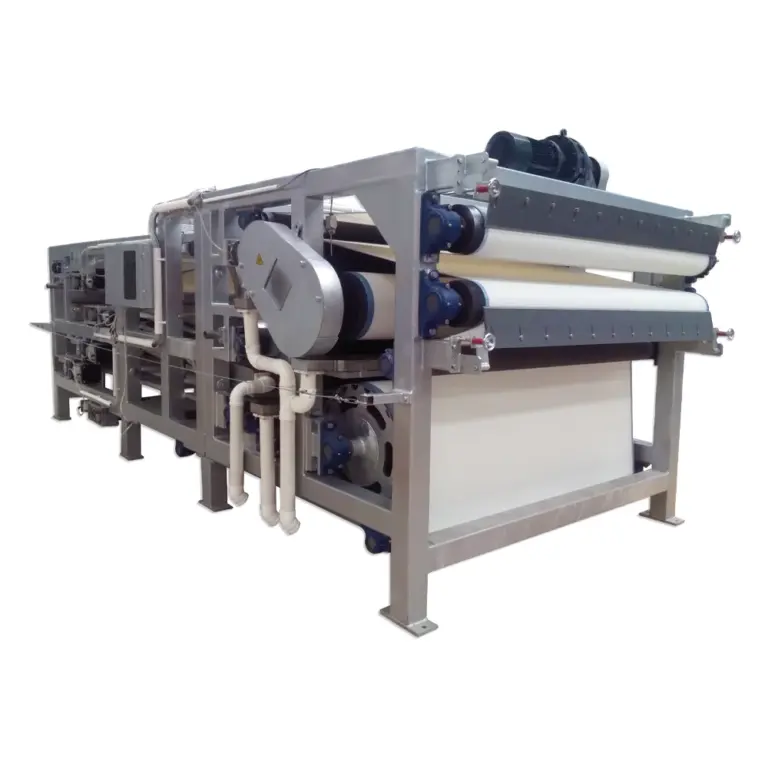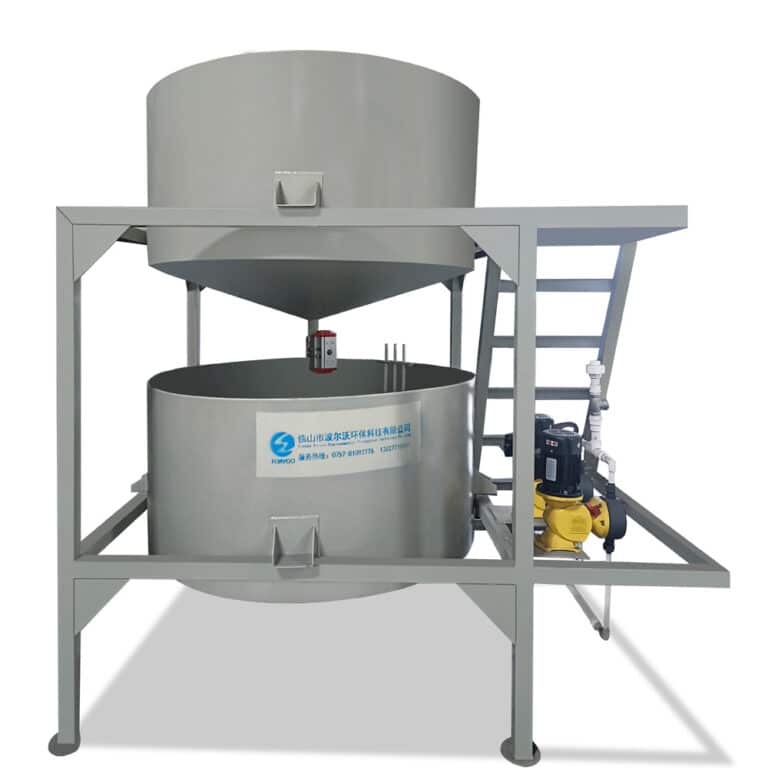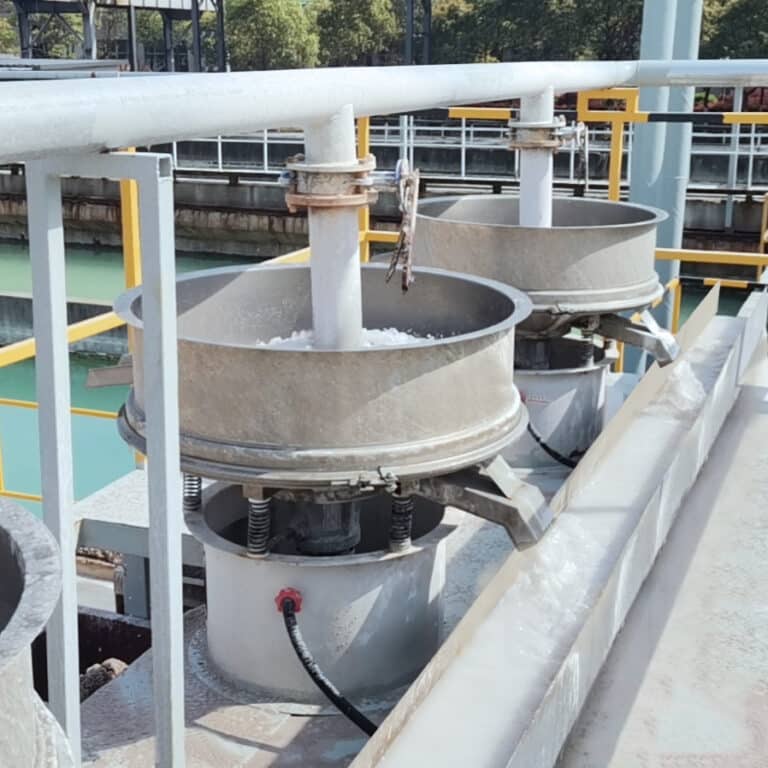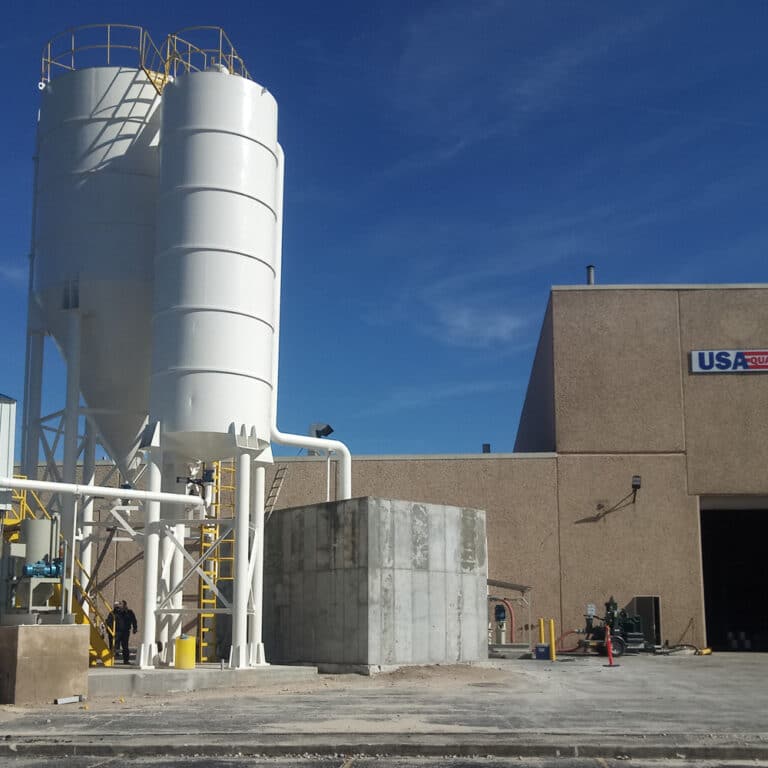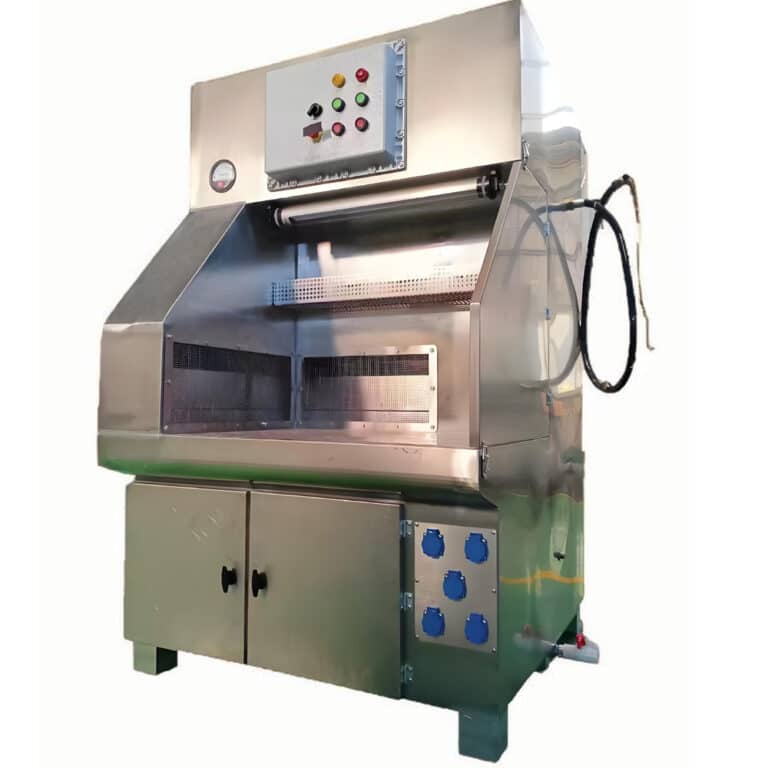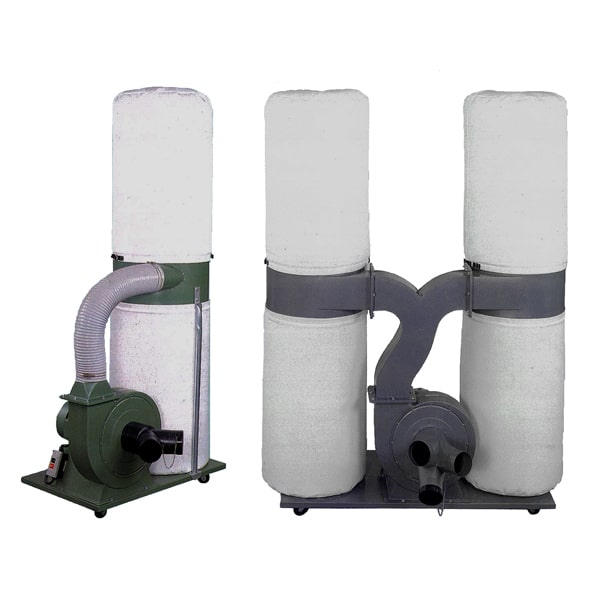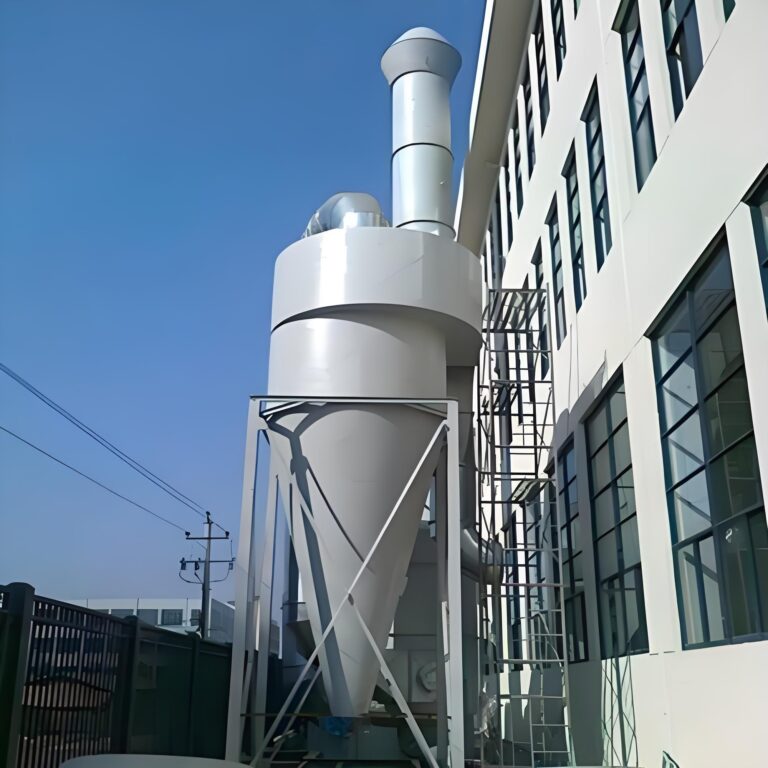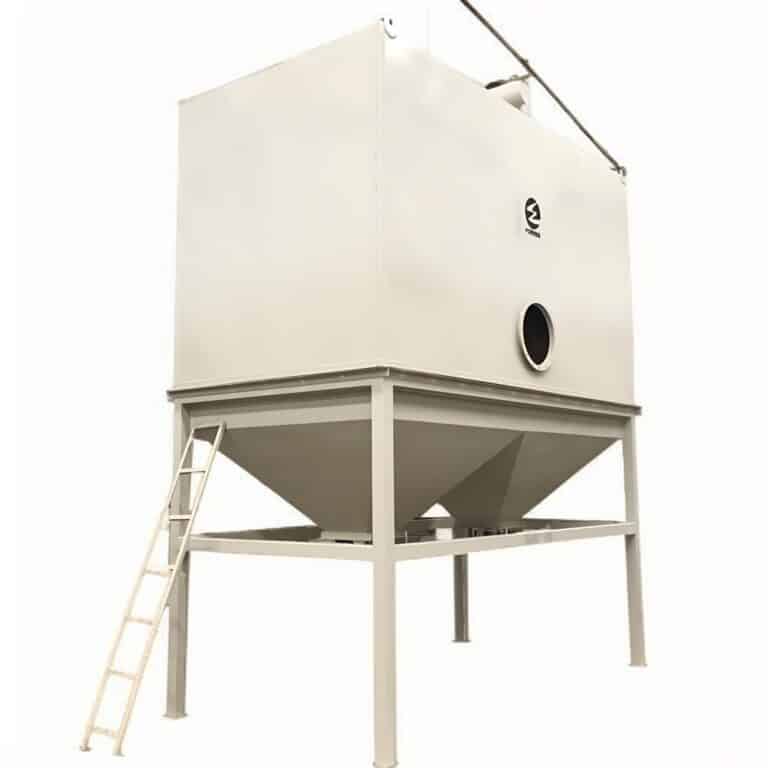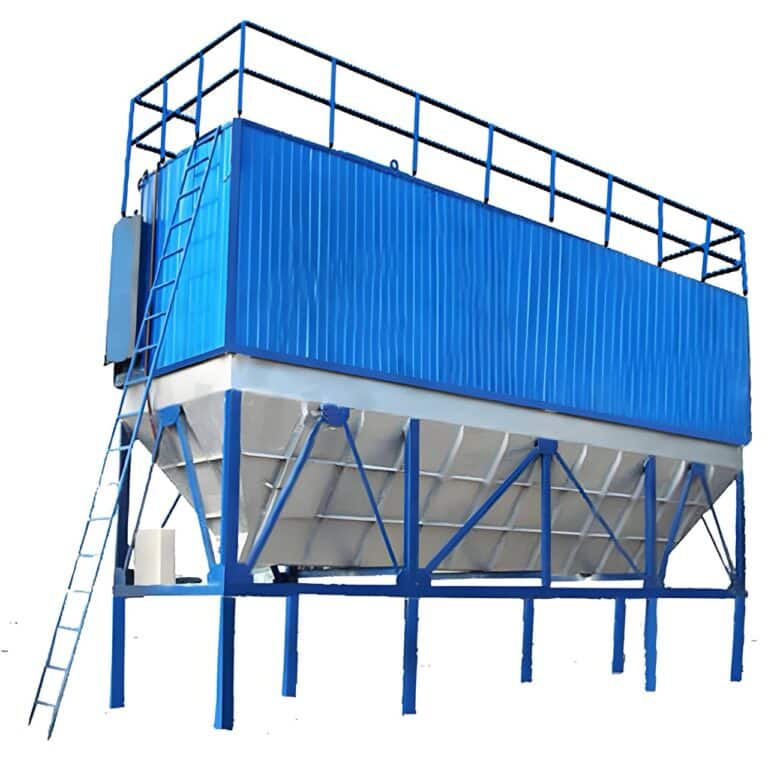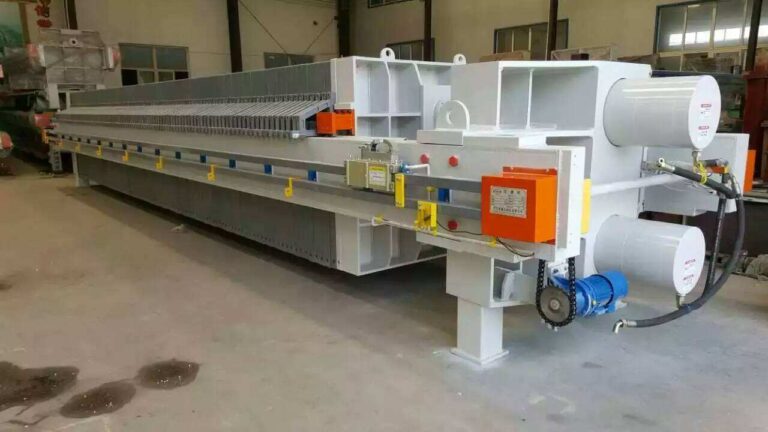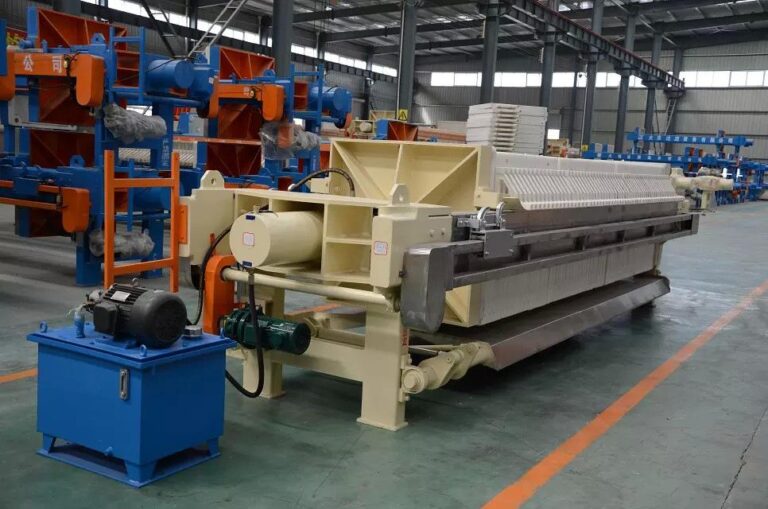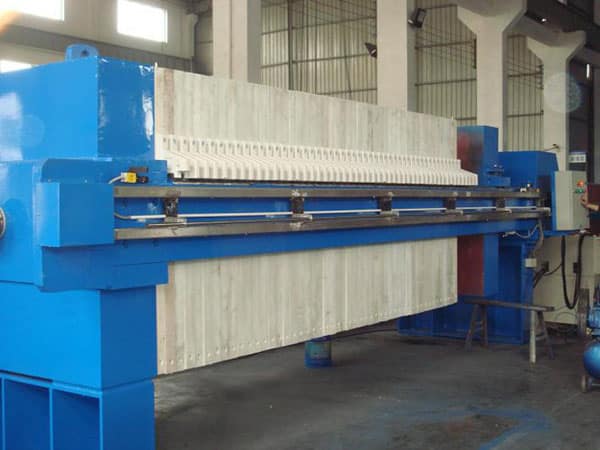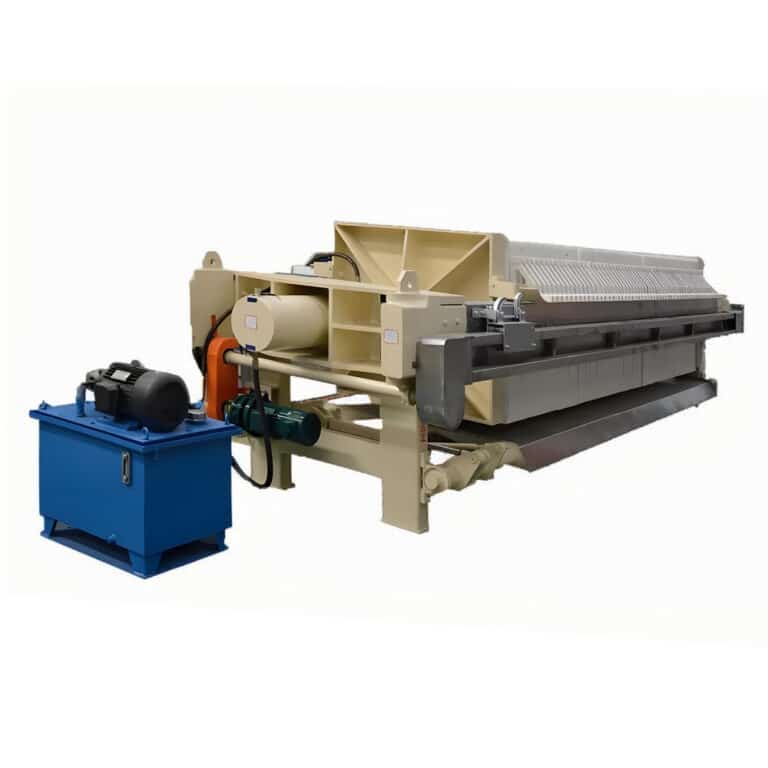Vakumlu seramik disk filtreler, katı-sıvı ayırma işlemlerinde benzeri görülmemiş düzeyde verimlilik ve hassasiyet sunarak oyunun kurallarını değiştiren bir teknoloji olarak ortaya çıkmıştır. Bu gelişmiş makineler, üstün susuzlaştırma özellikleri sağlayarak ve her zamankinden daha kuru filtre kekleri üreterek atık su arıtmadan madencilik ve kimyasal işlemeye kadar çeşitli endüstrileri dönüştürmektedir. Geleneksel filtreleme yöntemlerine göre daha fazla verim, daha iyi filtreleme performansı ve daha düşük işletme maliyetleri gibi bir dizi avantaj sunarlar. Endüstriler, süreçleri optimize etme ve çevresel etkiyi azaltma konusunda artan bir baskıyla karşı karşıya kaldıkça, bu yüksek performanslı makineler katı-sıvı ayırma yeteneklerini geliştirmek isteyen şirketler için giderek daha cazip bir çözüm haline geliyor. Bu makale, çalışma prensiplerini, temel bileşenlerini ve endüstriyel uygulamalara getirdikleri sayısız avantajı keşfederek vakumlu seramik disk filtreler dünyasına giriyor. Bu gelişmiş sistemlerin filtrasyon süreçlerindeki yaygın zorlukları nasıl ele aldığını inceleyecek ve katı-sıvı ayırma teknolojisinde mümkün olanın sınırlarını zorlayan en son yenilikleri tartışacağız. Vakumlu seramik disk filtrelerin karmaşıklıklarında gezinirken, neden birçok endüstri için tercih edilen bir seçenek haline geldiklerini ve daha verimli, uygun maliyetli ve çevre dostu operasyonlara nasıl katkıda bulunduklarını ortaya çıkaracağız. Filtre keklerinde yüksek kuru madde elde etmekten döngü sürelerini ve enerji tüketimini azaltmaya kadar, vakumlu seramik disk filtreler endüstriyel filtrasyonda yeni standartlar belirliyor.
Vakumlu seramik disk filtreler, uygulamaya bağlı olarak filtre keklerinde 90%'ye kadar kuru madde elde ederek çeşitli endüstrilerdeki katı-sıvı ayırma işlemlerinde benzersiz verimlilik ve tutarlılık sunarak filtrasyon teknolojisinde önemli bir sıçramayı temsil eder.
| Özellik | Geleneksel Filtrasyon Yöntemleri | Vakumlu Seramik Disk Filtre |
|---|---|---|
| Filtrasyon Verimliliği | Orta düzeyde | Yüksek |
| Kek Kuruluğu | Daha düşük | Daha yüksek (90% kuru maddeye kadar) |
| Enerji Tüketimi | Daha yüksek | 85%'ye kadar daha az |
| Operasyonel Ömür | Daha kısa | 24 aya kadar |
| Bakım Gereklilikleri | Daha yüksek | Daha düşük |
| Filtrat Kalitesi | Değişken | 50-200 ppm askıda katı madde |
| Kek Nem İçeriği | Daha yüksek | 1.0-4.0% gelenekselden daha düşük |
| Çok Yönlülük | Sınırlı | Geniş uygulama yelpazesi |
Vakumlu Seramik Disk Filtre Nasıl Çalışır?
Vakumlu seramik disk filtre, katıları sıvılardan ayırmak için bir dizi gözenekli seramik disk kullanarak basınçlı filtreleme prensibine göre çalışır. Süreç, filtreye bir bulamaç veya süspansiyonun eklenmesiyle başlar ve burada seramik disklere eşit olarak dağıtılır. Diskler bulamaç boyunca dönerken, katı partikülleri yüzeyde tutarken sıvıyı mikro gözenekli seramik malzemeden çeken bir vakum uygulanır. Vakumlu seramik disk filtrelerin verimliliğinin anahtarı, benzersiz tasarımlarında ve çalışmalarında yatmaktadır. Seramik diskler tipik olarak 1 ila 5 mikron arasında değişen gözenek boyutuna sahip alüminyum oksitten yapılmıştır ve en yaygın olanı 1,5-2,0 mikrondur. Bu mikro gözenekler, filtrasyon işlemi için çok önemli olan güçlü bir kılcal hareket yaratır. Diskler bulamaçtan döndükçe, kılcal hareket filtre kekinden kalan nemi uzaklaştırmaya devam eder ve sonuçta son derece kuru katılar elde edilir. Vakumlu seramik disk filtrenin filtrasyon döngüsü birkaç aşamaya ayrılabilir: kek oluşumu, susuzlaştırma, boşaltma ve rejenerasyon. Kek oluşumu sırasında, bulamaç seramik disklerin yüzeyine çekilerek bir katı madde tabakası oluşturur. Diskler dönmeye devam ettikçe, kek sürekli vakum etkisi ve kılcal kuvvetler yoluyla susuzlaştırılır. Boşaltma noktasına ulaşıldığında, bir sıyırıcı kurumuş keki disk yüzeyinden temiz bir şekilde çıkarır. Son olarak, bir geri yıkama sistemi seramik elemanların iç geçişlerini temizleyerek onları bir sonraki döngüye hazırlar.
Vakumlu seramik disk filtreler, geleneksel sistemlere kıyasla 30%'ye kadar daha yüksek verim elde edebilir ve bazı uygulamalarda döngü süreleri 50%'ye kadar azaltılabilir.
| Süreç Aşaması | Süre (Dakika) | Temel Özellikler |
|---|---|---|
| Pasta Oluşumu | 5-15 | Güçlü kılcal hareket, tek tip gözenek boyutu |
| Susuzlaştırma | 10-30 | Sürekli vakum ve kapiler susuzlaştırma |
| Tahliye | 1-2 | Kekin çıkarılması için verimli sıyırıcı sistemi |
| Rejenerasyon | 3-8 | Seramik eleman temizliği için yüksek basınçlı geri yıkama |
Vakumlu Seramik Disk Filtrenin Temel Bileşenleri Nelerdir?
Vakumlu seramik disk filtre, üstün filtreleme performansı sağlamak için uyum içinde çalışan birkaç kritik bileşenden oluşur. Bu bileşenleri anlamak, bu gelişmiş sistemlerin yeteneklerini ve avantajlarını takdir etmek için gereklidir. Vakumlu seramik disk filtrenin çekirdeği seramik disk düzeneğidir. Bu diskler, dikkatlice tasarlanmış gözenekli bir yapıya sahip, tipik olarak alüminyum oksit olmak üzere yüksek kaliteli seramik malzemelerden yapılmıştır. Diskler, sürekli filtrelemeye izin verecek şekilde dönen merkezi bir şaft üzerine monte edilmiştir. Seramik malzeme inerttir, uzun bir çalışma ömrüne sahiptir ve neredeyse tüm kimyasallara karşı dayanıklıdır, bu da onu çok çeşitli uygulamalar için uygun hale getirir Vakum sistemi, filtrasyon sürecini yönlendiren basınç farkını oluşturmaktan sorumlu olan bir başka önemli bileşendir. Geleneksel bez filtrelerin aksine, vakumlu seramik disk filtreler, hava atılımı olmadan daha yüksek vakum seviyelerini koruma yetenekleri nedeniyle daha küçük vakum pompaları gerektirir. Bu da önemli ölçüde enerji tasarrufu ve işletme maliyetlerinde azalma sağlar. Otomasyon, modern vakumlu seramik disk filtrelerin merkezinde yer alır ve sofistike kontrol sistemleri operasyonun her yönünü yönetir. Bu sistemler, basınç transdüserleri, akış ölçerler ve konum sensörleri dahil olmak üzere filtre boyunca çeşitli sensörler ve aktüatörlerle arayüz oluşturur. Bu kontrol seviyesi, gerçek zamanlı ayarlamalara ve filtrasyon sürecinin optimizasyonuna olanak tanır.
Gelişmiş vakumlu seramik disk filtreler, büyük bir bakım gerektirmeden 24 aya kadar kesintisiz çalışabilir ve geleneksel filtreleme sistemlerine kıyasla arıza süresini önemli ölçüde azaltır ve genel tesis verimliliğini artırır.
| Bileşen | Fonksiyon | Vakumlu Seramik Disk Filtrelerde Özel Özellikler |
|---|---|---|
| Seramik Diskler | Filtrasyon ortamı | Mikro gözenekli yapı, kimyasal direnç |
| Vakum Sistemi | Basınç farkı oluşturun | Daha küçük boyut, daha yüksek verimlilik |
| Kontrol Sistemi | Genel operasyonu yönetmek | Gerçek zamanlı optimizasyon ile gelişmiş PLC |
| Sıyırıcı Mekanizması | Filtre kekini çıkarın | Disklere zarar vermeden verimli kek tahliyesi |
| Geri Yıkama Sistemi | Seramik elemanları temizleyin | Sürekli performans için yüksek basınçlı temizlik |
Vakumlu Seramik Disk Filtrelerden En Çok Hangi Sektörler Faydalanır?
Vakumlu seramik disk filtreler, her biri teknolojinin yüksek hacimli malzemeleri tutarlı sonuçlarla işleme yeteneğinden yararlanan çok çeşitli endüstrilerde uygulama alanı bulmuştur. Bu makinelerin çok yönlülüğü, onları çevre yönetiminden mineral işlemeye kadar çeşitli sektörlerde vazgeçilmez kılmaktadır. Atık su arıtma sektöründe, vakumlu seramik disk filtreler çamurun susuzlaştırılmasında ve bertaraf hacimlerinin önemli ölçüde azaltılmasında çok önemli bir rol oynamaktadır. Belediyeler ve endüstriyel tesisler, sıvı atıkları yönetilebilir katı keklere dönüştürmek için bu filtreleri kullanır, sıkı çevre düzenlemelerini karşılarken nakliye ve bertaraf maliyetlerini önemli ölçüde azaltır. Madencilik endüstrisi, mineral konsantrelerinin ve atıkların susuzlaştırılması için büyük ölçüde vakumlu seramik disk filtrelere güvenmektedir. Yüksek kek katı içeriği elde etme kabiliyeti, nakliye maliyetlerinde önemli tasarruflar ve daha iyi malzeme kullanımı sağlayabileceğinden bu sektörde özellikle değerlidir. Ayrıca, bu filtrelerin tutarlı performansı, sonraki işlemler için gerekli olan ürün kalitesinin korunmasına yardımcı olur. Kimya üreticileri de çeşitli ayırma işlemleri için vakumlu seramik disk filtrelerden büyük ölçüde yararlanır. Filtrasyon parametreleri üzerindeki hassas kontrol, atıkları en aza indirirken yüksek saflıkta ürünlerin üretilmesini sağlar. Ürün kalitesi ve tutarlılığının çok önemli olduğu ilaç endüstrisinde, bu filtreler mevzuata uygunluk için gereken kontrol ve dokümantasyon seviyesini sunar.
Madencilik sektöründe, vakumlu seramik disk filtrelerin geleneksel susuzlaştırma yöntemlerine kıyasla mineral konsantrelerinin nem içeriğini 50%'ye kadar azaltarak nakliye maliyetlerinde önemli düşüşler sağladığı ve malzeme kullanımını iyileştirdiği gösterilmiştir.
| Endüstri | Uygulama | Ulaşılabilir Kuru Madde İçeriği | Temel Avantajlar |
|---|---|---|---|
| Atık Su Arıtma | Çamur Susuzlaştırma | 20-40% | Azaltılmış bertaraf hacmi, daha düşük maliyetler |
| Madencilik | Konsantre Susuzlaştırma | 50-70% | Daha yüksek ürün kalitesi, daha düşük nakliye maliyetleri |
| Kimyasal Üretim | Ürün Filtreleme | 40-60% | Geliştirilmiş saflık, artırılmış verim |
| Farmasötik | API Ayrımı | 30-50% | Tutarlı kalite, mevzuata uygunluk |

Vakumlu Seramik Disk Filtreler Operasyonel Verimliliği Nasıl Artırır?
Vakumlu seramik disk filtreler, geleneksel filtreleme yöntemlerine kıyasla operasyonel verimlilikte önemli gelişmeler sunar. En önemli avantajlardan biri enerji tüketimindeki azalmadır. Seramik disklerin benzersiz tasarımı, filtrasyon alanı başına daha küçük vakum akış hızlarına ve pompa boyutlarına izin vererek geleneksel yöntemlere göre 85%'ye kadar daha az enerji tüketimi sağlar. Vakumlu seramik disk filtreler, filtrasyon döngüsü boyunca optimum basınç ve akış hızlarını koruyarak daha düzgün kek oluşumu ve daha yüksek katı madde yakalama oranları elde edebilir. Bu tutarlılık, ilaç ve ince kimyasallar gibi ürün kalitesinin çok önemli olduğu sektörlerde özellikle değerlidir Bakım verimliliği, vakumlu seramik disk filtrelerin üstün olduğu bir başka alandır. Tahmini kullanım ömrü 24 aya kadar olan bu filtreler, birçok uygulamada sürekli filtreleme kampanyalarını destekler. Kumaş arızaları nedeniyle sık sık durmaya eğilimli bez disk filtrelerin aksine, seramik disk filtreler üstün güvenilirlik ve daha az bakım gereksinimi sunar. Daha düşük kek nemi içeriği elde etme yeteneği yalnızca ürün kalitesini iyileştirmekle kalmaz, aynı zamanda sonraki işlem ve bertaraf maliyetlerini de azaltır. Bu, özellikle büyük hacimlerde atık veya geri kazanılması gereken değerli malzemelerle uğraşan endüstriler için önemlidir.
Çalışmalar, vakumlu seramik disk filtrelerin geleneksel sistemlere kıyasla işletme maliyetlerini 80%'ye kadar azaltabildiğini ve aynı zamanda verimi 20-30% artırabildiğini göstermiştir. Azalan işletme maliyetleri ve artan üretkenliğin bu kombinasyonu, yüksek hacimli uygulamalar için 12-18 ay gibi kısa bir sürede yatırımın geri dönüşünü sağlayabilir.
| Verimlilik Metriği | Geleneksel Yöntemlere Karşı İyileştirme | Operasyonlar Üzerindeki Etkisi |
|---|---|---|
| Enerji Tüketimi | 85%'ye kadar azaltma | Önemli maliyet tasarrufu, azaltılmış karbon ayak izi |
| Bakım Duruş Süresi | 50%'ye kadar azaltma | Artan tesis kullanılabilirliği ve üretkenliği |
| Kek Nem İçeriği | 1.0-4.0% daha düşük | Geliştirilmiş ürün kalitesi, azaltılmış üretim maliyetleri |
| Filtrat Kalitesi | 50-200 ppm askıda katı madde | Ürün kayıpları en aza indirildi, su geri dönüşümü iyileştirildi |

Vakumlu Seramik Disk Filtre Teknolojisindeki Son Yenilikler Nelerdir?
Vakumlu seramik disk filtre teknolojisi alanı, üreticilerin endüstrinin değişen ihtiyaçlarını karşılamak için yeni özellikler ve yetenekler sunmasıyla sürekli olarak gelişmektedir. Son zamanlardaki en önemli yeniliklerden biri, kompakt bir tasarımda gelişmiş filtreleme yetenekleri sunan 204m² filtreleme alanına sahip CX12-204 gibi daha büyük kapasiteli filtrelerin geliştirilmesidir Diğer bir yenilik alanı ise filtre performansını optimize etmek için yapay zeka ve makine öğreniminin uygulanmasıdır. Fiziksel, kimyasal ve mineralojik özellikleri inceleyerek malzemenin "filtrelenebilirliğini" hızla değerlendirmek için gelişmiş yapay zeka modelleri geliştirilmektedir. Bu, farklı filtreleme yöntemleri için maliyetlerin tahmin edilmesine, erken karar vermeye ve mühendislik fizibilitesinin doğrulanmasına yardımcı olur. Sürdürülebilirlik, vakumlu seramik disk filtre tasarımında da yeniliği teşvik etmektedir. Enerji verimliliği ve su tasarrufuna odaklanma, sadece daha az enerji tüketmekle kalmayıp aynı zamanda proseste doğrudan yeniden kullanılabilen daha yüksek kalitede filtrat üreten filtrelerin geliştirilmesine yol açmıştır. Bu kapalı döngü yaklaşımı, su kıtlığı sorunlarıyla karşı karşıya olan endüstrilerde özellikle değerlidir. Modüler tasarım yaklaşımları, daha esnek ve ölçeklenebilir filtrasyon çözümlerine olanak tanıyarak ilgi görmektedir. Bu tasarımlar daha kolay kurulum, bakım ve gelecekteki kapasite artırımlarını mümkün kılarak vakumlu seramik disk filtreleri değişen üretim ihtiyaçlarına daha uyumlu hale getirmektedir.
Vakumlu seramik disk filtre teknolojisindeki son gelişmeler, önceki nesil sistemlere kıyasla kek nem içeriğini 5-10% iyileştirirken döngü sürelerini 15-20% daha azaltma potansiyelini ortaya koymuştur. Bu gelişmeler, yüksek hacimli endüstriyel uygulamalar için önemli maliyet tasarrufları ve üretkenlik kazanımları anlamına gelebilir.
| İnovasyon | Fayda | Sektör Etkisi |
|---|---|---|
| Daha Büyük Kapasiteli Filtreler | Artan verim, azalan ayak izi | Yüksek |
| Yapay Zeka Odaklı Optimizasyon | Geliştirilmiş performans tahmini ve kontrolü | Orta-Yüksek |
| Sürdürülebilir Tasarım | Azaltılmış çevresel etki, daha düşük işletme maliyetleri | Yüksek |
| Modüler Yapı | Esneklik, daha kolay ölçeklendirme ve bakım | Orta |
Sonuç olarak, vakumlu seramik disk filtreler, katı-sıvı ayırma teknolojisinde önemli bir ilerlemeyi temsil etmekte ve çok çeşitli endüstrilerde benzersiz verimlilik, tutarlılık ve üretkenlik sunmaktadır. Yenilikçi seramik membran teknolojisini sofistike otomasyon sistemleriyle birleştiren bu gelişmiş makineler sadece enerji tüketimini ve işletme maliyetlerini düşürmekle kalmaz, aynı zamanda ürün kalitesini iyileştirir ve atıkları azaltır Vakumlu seramik disk filtrelerin faydalarını en üst düzeye çıkarmanın anahtarı dikkatli seçim ve uygulamada yatmaktadır. Endüstriler bulamaç özellikleri, kapasite gereksinimleri ve toplam sahip olma maliyeti gibi faktörleri göz önünde bulundurarak kendi özel ihtiyaçları için en uygun sistemi seçebilirler. Teknoloji gelişmeye devam ettikçe, yapay zekaya dayalı kontroller, daha büyük kapasiteli tasarımlar ve sürdürülebilir operasyonlardaki yeniliklerle, vakumlu seramik disk filtrelerin yeteneklerinin daha da artması muhtemeldir. Yüksek hacimli filtreleme ihtiyaçları ile uğraşan endüstriler için vakumlu seramik disk filtreye yapılan yatırım, uzun vadede önemli faydalar sağlayabilir. Gelişmiş operasyonel verimlilik ve ürün kalitesinden, azaltılmış çevresel etki ve daha düşük işletme maliyetlerine kadar, bu gelişmiş sistemler daha verimli ve sürdürülebilir endüstriyel süreçler arayışında değerli bir varlık olduğunu kanıtlamaktadır Geleceğe baktığımızda, vakumlu seramik disk filtrelerin endüstriyel filtrasyon ortamını şekillendirmede çok önemli bir rol oynamaya devam edeceği açıktır. Endüstriler, bu teknolojideki en son gelişmelerden haberdar olarak ve özel ihtiyaçlarını dikkatlice değerlendirerek, inovasyonu teşvik etmek, üretkenliği artırmak ve giderek zorlaşan küresel pazarda rekabet avantajını korumak için bu gelişmiş sistemlerin gücünden yararlanabilir.

